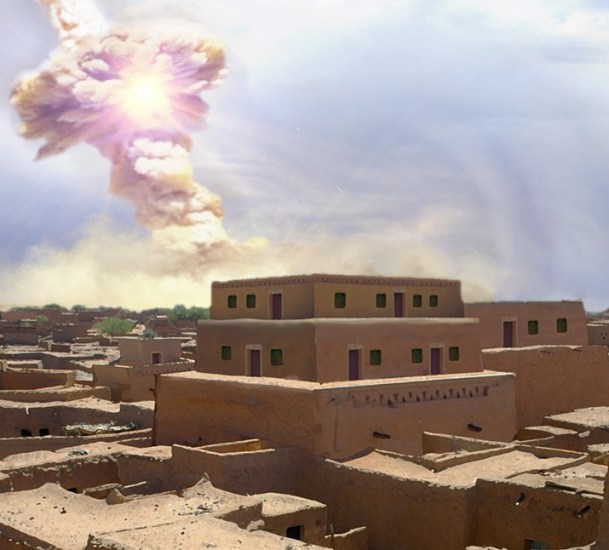
There you are, living your polytheistic/animistic Bronze Age life in a middle-sized city of about 8,000 people in what today we call the Jordan Valley when boom!
Actually, you don’t remember anything. You and everyone else nearby were vaporized in an explosion so intense that grains of sand turned into diamonds.
“What god did that?” the outlying surivors wonder. Some hollow-eyed bearded guy has an explanation: the Lord of Storms was punishing the land, and now we must obey Him.
Then the LORD rained upon Sodom and upon Gomorrah brimstone and fire from the LORD out of heaven;
And he overthrew those cities, and all the plain, and all the inhabitants of the cities, and that which grew upon the ground. (Genesis 19:24–25)
Obviously, the people there deserved it. What did they do to anger the LORD? Clearly he wreaked his vengence upon future generations:
The proposed asteroid that exploded over Tall el-Hammam may have also vaporized and ejected the nearby water from the Dead Sea over the area. Being highly toxic from the sheer amounts of salt in the water, the toxic water may have scattered across the lands from the impact; this, according to the research team, may be the reason why the city,together with some nearby settlements, remained uninhabited for hundreds of years after the proposed event took place. The resulting levels of salinity in the area would have been damaging for any crops they may have attempted to grow on the same soil, and would have needed hundreds of years’ worth of rain to wash out.
Fourteen miles away, the important city of Jericho was also smashed.
The very same winds that finished off Tall el-Hammam then reached Jericho, toppling some of its famous walls; some parts of Jericho burned as well.
You may know the story about how “Joshua fit [fought] the battle of Jericho” and “de walls came tumblin’ down.” And then the Hebrews killed everybody except Rahab the prostitute.
Well, no. Jericho’s walls came tumbling down two or three centuries before the Hebrews conquered Canaan (an event that not all historicians — even Israeli historians — think actually happened). The destruction formerly blamed on an Egyptian army might well have been caused by this “giant space rock.”
If you live in an “enchanted” world, in which events have meaning, what meaning would you draw from massive destruction out of nowhere?



